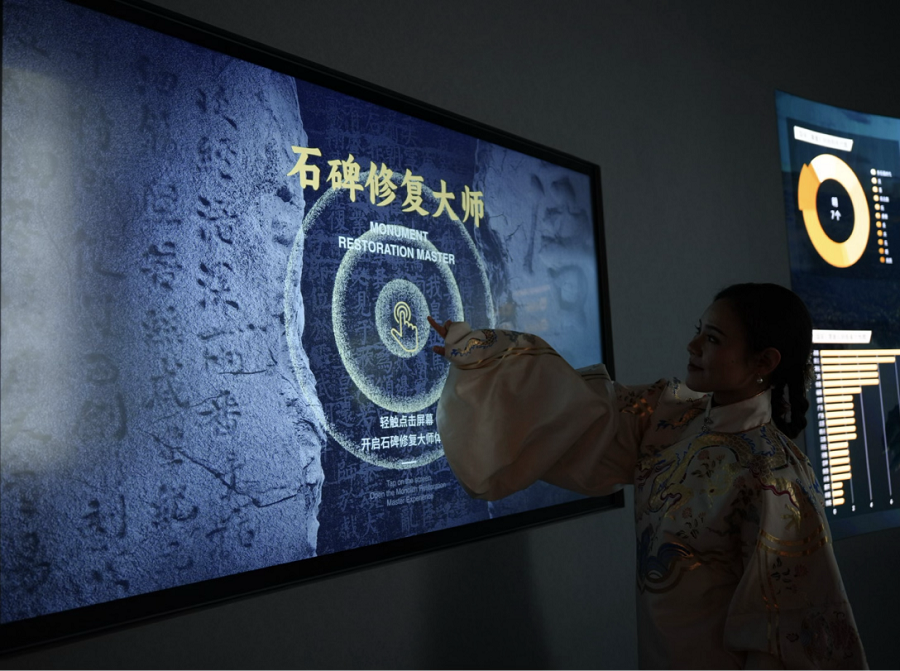
At the recent 21st China Shenzhen International Cultural Industries Fair in Shenzhen, Guangdong province, the database of Chinese inscriptions on precipices and the digital gene bank of Mawangdui Pattern presented in the Hunan Pavilion attracted a large number of visitors' attention.
Jointly built by Malanshan Cultural Digital Innovation Center and Cicada Modern Culture, the database of Chinese inscriptions on precipices collects high-definition cliff inscriptions across China, such as "duxiufeng" (Duxiu Peak) in Guangxi Zhuang autonomous region, "wuyishan" (Wuyi Mountain) in Fujian province, "yunmenshan" (Yunmen Mountain) in Shandong province and "tianyahaijiao" (the end of the earth) in Hainan province.

The database has given rise to a digital chip for stone and tablet inscriptions and their multimedia data, scientific image, digital restoration, element deconstruction, cultural interpretation, literary research and knowledge graphs by conducting cultural sorting, knowledge structuring, 2D and 3D graphic restoration.
The initial batch includes 505 pieces of cliff inscription data from Wuxi Park in Yongzhou, Hunan province.
The Wuxi cliff inscriptions are the largest existing open-air cliff inscriptions in China, dating back over a thousand years and founded by litterateur Yuan Jie (719-772) and calligrapher Yan Zhenqing (709-784) in the Tang Dynasty (618-907).
Subsequently, famous figures throughout history followed suit, leaving behind 505 inscriptions of poetry and verses.

The digital gene bank of the Mawangdui Pattern is another highlight of the Hunan Pavilion.
The bank is a systematic database of Han Dynasty (206 BC-AD 220) patterns based on over 3,000 sets of Han Dynasty lacquerware and silk patterns from the Mawangdui Han tombs.
By systematically collecting and digitally reconstructing classical patterns from Mawangdui artifacts, it achieves high-precision pattern restoration, cultural symbolism interpretation, and secondary creation capabilities, forming a resource platform that is researchable, designable, and communicable.
With the support of digital technology, visitors can deeply explore the colorful patterns of Han Dynasty cultural treasures through immersive interactive screens, actively participate in the entire process of pattern intelligent extraction, dynamic coloring, and secondary creation, engaging in a cross-temporal dialogue with cultural heritage.




















